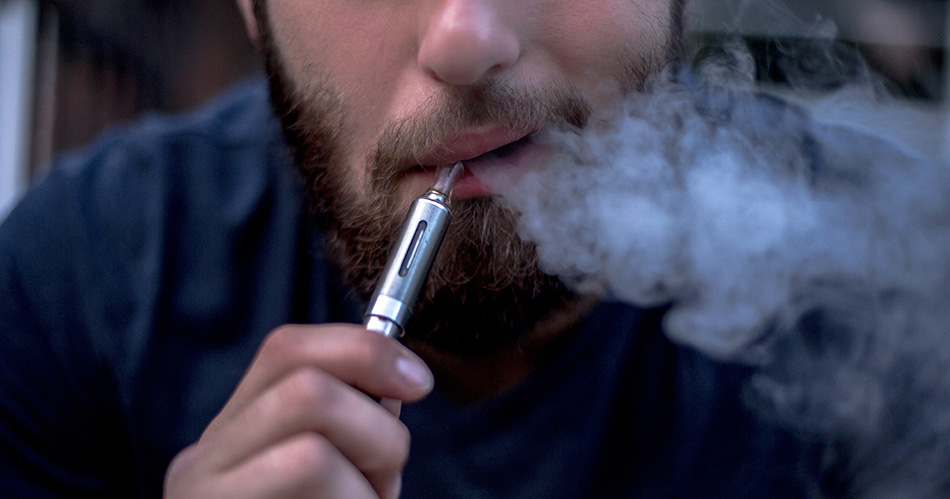Like the advice column Dear Abby, we regularly answer etiquette questions on how to handle tobacco-related issues at work and at home.
Below are delicate questions we hear about secondhand vape aerosol, also known as “vape smoke,” with responses based on my 15+ years of experience in treating tobacco addiction.
Question 1: My spouse is an e-cigarette user and I’m concerned about him vaping around our child. I think he believes that it’s not dangerous like cigarette smoke. What’s a non-aggressive way to ask him to not vape around our child?
I can appreciate the term “non-aggressive,” as an aggressive approach typically does not work well in situations like these. It can put the other person in a defensive mode.
The first thing I’d recommend is to make it clear to your spouse you aren’t asking him to give it up entirely. Next, express that you have concerns about e-cigarette use around your child and explain why.
Unlike cigarette smoke, not everyone is aware of the potential harm secondhand vape aerosol cause other people, especially children. According to the Surgeon General, vaping aerosols or “vape smoke” can expose children to harmful airborne pollutants that they would not normally encounter.
Children are especially susceptible to the health effects associated with inhaling airborne pollutants because of their developing respiratory systems and lower body weights.
Additionally, nicotine is toxic to infants and children at much lower levels than adults, and nicotine exposure can have adverse health effects that include impaired brain and lung development.
Question 2: What do you do when the CEO of the company is a vape user and isn’t open to changing policy until there is a law in place?
Ideally, the CEO of a company would feel responsible for the employees’ work environment. So, if there are concerns with exposure to vaping (and there should be), I’d encourage you to set up a meeting to bring up the following points respectfully.
First, secondhand vape aerosol can be harmful to other people, especially populations who are susceptible to health problems, such as asthma. Aerosol from e-cigarettes can also contain cancer-causing chemicals and heavy metals like lead, among other chemicals.
Secondly, there have been documented cases of e-cigarette devices exploding, causing serious damage to the user. There may be added dangers if a vape catches fire or explodes near flammable gases or liquids, such as oxygen, propane, or gasoline.
None of these risks should be acceptable risks in a work environment.
To prepare for your meeting with the CEO, be sure to brush up on local laws in your area so you are informed. The American Nonsmokers’ Rights Foundation, for example, does a great job of tracking all this information on its website.
If the CEO is unwilling to agree to 100% abstinence, identify the end goal to be no vaping indoors (including work vehicles).
And if there is resistance to hearing these facts from you, encourage a discussion with your healthcare provider or share reliable information on the topic from our Truth Initiative and EX Program websites.
Another option is to chat with an EX Coach like me who can help you work through the different questions or comments that might come up.
Addressing secondhand “vape smoke,” legal risks with e-cigarettes
The health risks to others and possible legal risks to employers are very real with regards to e-cigarette vapor. Education is key.
While some research suggests that using e-cigarettes with nicotine may help people to quit smoking, the long-term health consequences of using e-cigarettes are not known and more research is needed to confirm if they are a reliable tool for quitting smoking. For more information on whether e-cigarettes help people to quit smoking, see our blog What Happens When You Quit Smoking and Start Vaping?
Interested in learning details about how the EX Program helps e-cigarette users quit tobacco for good? Visit our Program page.




